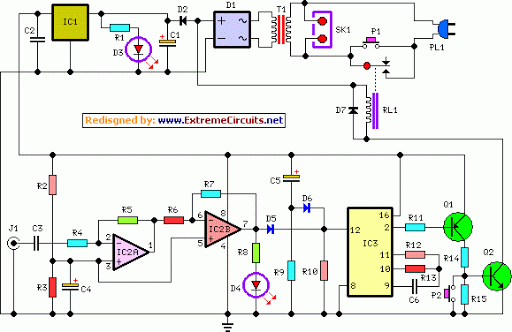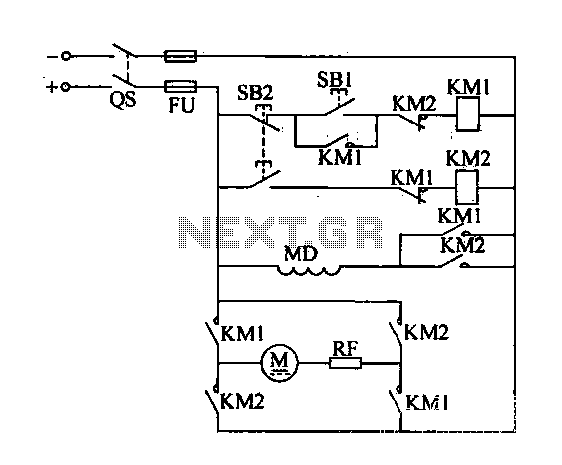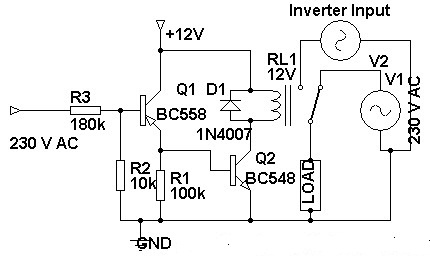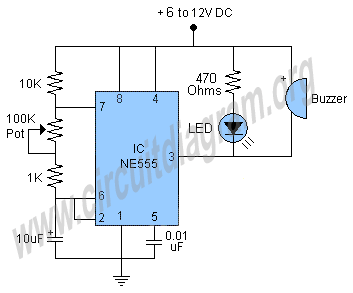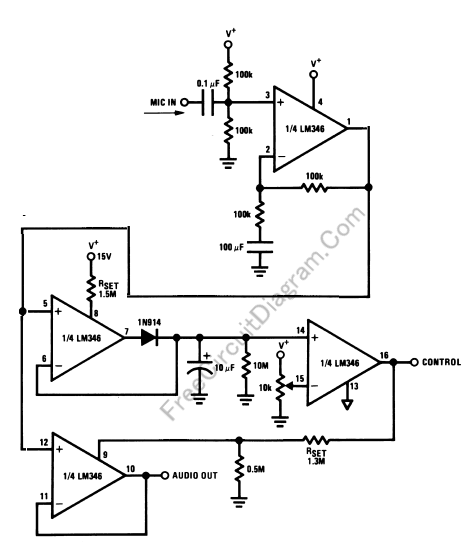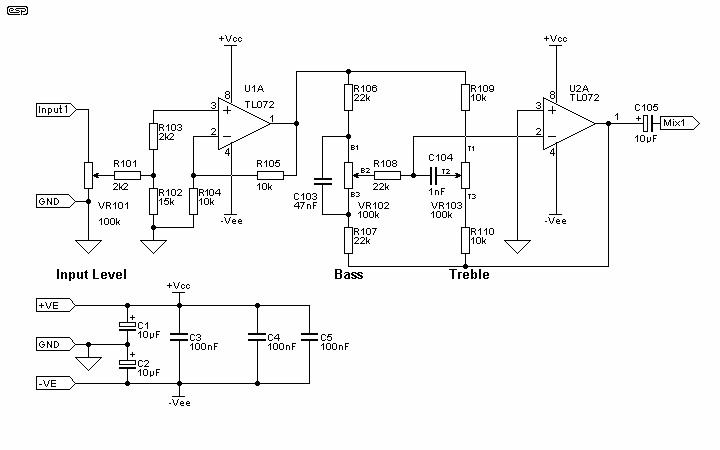
Common mode signal of emitter-coupled differential amplifier circuit a
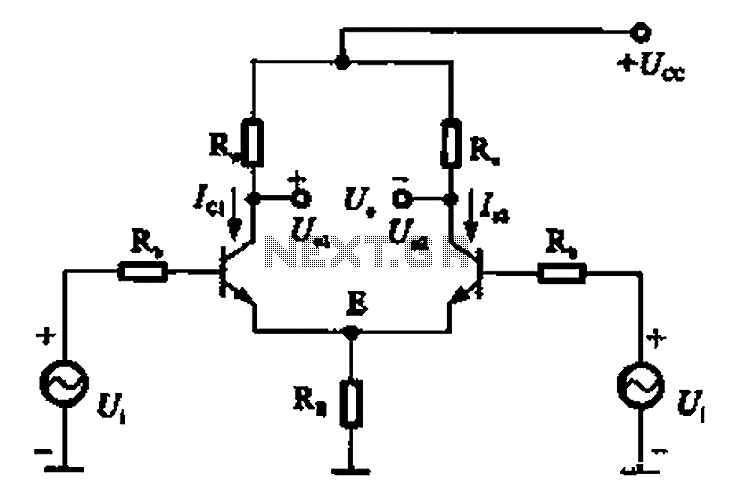
The common mode signal of an emitter-coupled differential amplifier circuit assumes that two equal small increases of the same polarity signal, referred to as the common mode signal, occur simultaneously. This results in an increase in the potential at point U, with the current flowing through the transistors ICI and ICZ. The presence of the common mode input signal introduces strong negative feedback, which significantly reduces common-mode gain and minimizes zero-point drift. Additionally, examples of differential amplifier applications in audio power amplifier circuits illustrate the use of two sets of input differential amplifiers, effectively suppressing zero drift and reducing the influence of noise and interference.
The emitter-coupled differential amplifier is a key component in analog signal processing, particularly in applications requiring high precision and noise immunity. In this configuration, two identical transistors are used, with their emitters connected together and biased by a common resistor. The differential input allows the circuit to amplify the difference between two input signals while rejecting any signals that are common to both inputs, known as common mode signals.
The operation of the circuit relies on the principle of negative feedback. When a common mode signal is applied, both transistors experience an equal increase in their base-emitter voltages, leading to a simultaneous increase in collector currents. This results in a rise in the voltage at the common emitter point (point U). The negative feedback mechanism works by adjusting the output to counteract any changes caused by the common mode signal, thus stabilizing the output voltage and reducing the overall gain for common mode signals. This is quantified by the common-mode rejection ratio (CMRR), which is a measure of the circuit's ability to reject unwanted common mode signals.
In practical applications, such as audio power amplifiers, the differential amplifier configuration is utilized to improve performance by minimizing zero drift and enhancing the signal-to-noise ratio. By employing two sets of differential amplifiers, the circuit can effectively cancel out noise and interference that may be introduced from various sources, such as power supply fluctuations or electromagnetic interference. This design approach not only enhances the fidelity of the audio signal but also ensures that the amplifier operates reliably across a wide range of conditions, making it suitable for high-quality audio applications. Common mode signal of emitter-coupled differential amplifier circuit a At the input of the circuit is assumed that two equal small increase, of the same polarity signal (referr ed to as common mode signal), as shown in (a), is seven and I will increase at the same time as, where the current flowing through the Ie ICI + ICZ. Thus, e point potential U increases, the current negative feedback to play the role. In other words, common mode input signal existence introduces a strong negative feedback, so that the common-mode magnification greatly reduced and, therefore, reduce the zero- point drift.
Figure (b) shows examples of the differential amplifier applications in audio power amplifier circuit. Use two sets of input differential amplifier circuit in the amplifier. Thereby effectively suppressing the generation of zero drift, reducing the influence of noise and interference.
The emitter-coupled differential amplifier is a key component in analog signal processing, particularly in applications requiring high precision and noise immunity. In this configuration, two identical transistors are used, with their emitters connected together and biased by a common resistor. The differential input allows the circuit to amplify the difference between two input signals while rejecting any signals that are common to both inputs, known as common mode signals.
The operation of the circuit relies on the principle of negative feedback. When a common mode signal is applied, both transistors experience an equal increase in their base-emitter voltages, leading to a simultaneous increase in collector currents. This results in a rise in the voltage at the common emitter point (point U). The negative feedback mechanism works by adjusting the output to counteract any changes caused by the common mode signal, thus stabilizing the output voltage and reducing the overall gain for common mode signals. This is quantified by the common-mode rejection ratio (CMRR), which is a measure of the circuit's ability to reject unwanted common mode signals.
In practical applications, such as audio power amplifiers, the differential amplifier configuration is utilized to improve performance by minimizing zero drift and enhancing the signal-to-noise ratio. By employing two sets of differential amplifiers, the circuit can effectively cancel out noise and interference that may be introduced from various sources, such as power supply fluctuations or electromagnetic interference. This design approach not only enhances the fidelity of the audio signal but also ensures that the amplifier operates reliably across a wide range of conditions, making it suitable for high-quality audio applications. Common mode signal of emitter-coupled differential amplifier circuit a At the input of the circuit is assumed that two equal small increase, of the same polarity signal (referr ed to as common mode signal), as shown in (a), is seven and I will increase at the same time as, where the current flowing through the Ie ICI + ICZ. Thus, e point potential U increases, the current negative feedback to play the role. In other words, common mode input signal existence introduces a strong negative feedback, so that the common-mode magnification greatly reduced and, therefore, reduce the zero- point drift.
Figure (b) shows examples of the differential amplifier applications in audio power amplifier circuit. Use two sets of input differential amplifier circuit in the amplifier. Thereby effectively suppressing the generation of zero drift, reducing the influence of noise and interference.
